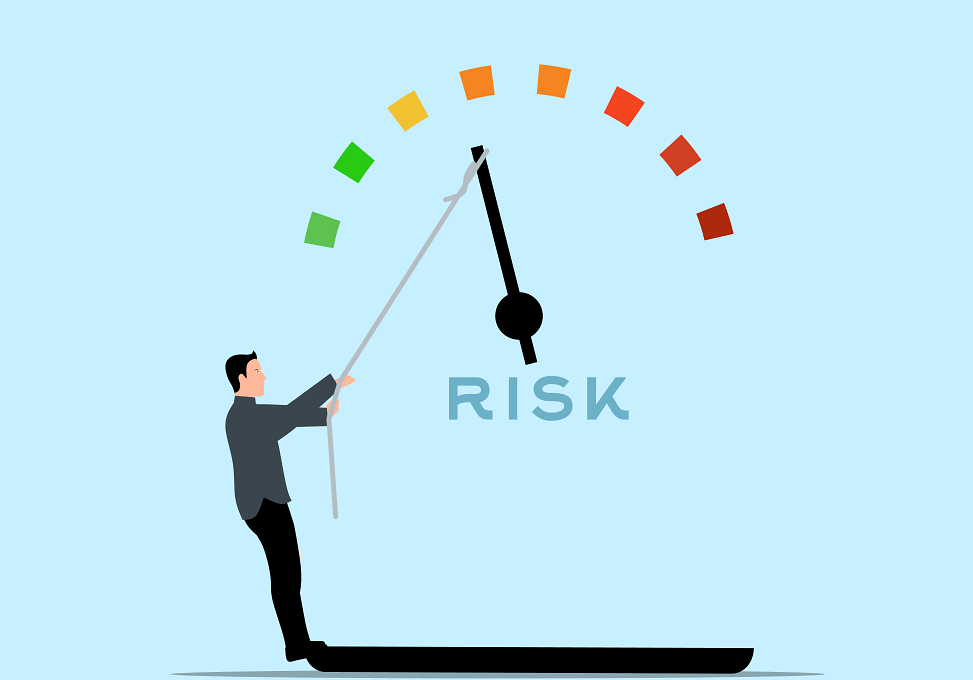Managing Credit Risk During Economic Downturns
In times of economic uncertainty, effective credit risk management becomes crucial as organizations navigate through potential financial hardships. Credit risk refers to the risk of loss resulting from a borrower’s failure to repay a loan or meet contractual obligations. During downturns, companies may face heightened defaults, making it essential for financial institutions to adapt and implement robust strategies. Proper assessment and monitoring of borrowers’ creditworthiness can help mitigate risks. This often involves rigorous analyses of financial statements and reviewing macroeconomic indicators. Additionally, the development of a comprehensive risk framework is vital when evaluating a portfolio’s exposure to credit risk. Understanding the economic landscape and its impact on borrower performance can inform lending decisions, thereby protecting the organization’s bottom line. Financial institutions should also prioritize the diversification of their credit portfolios to minimize concentration risks. Active communication with borrowers during economic hardships can uncover potential issues early and facilitate proactive measures. Utilizing technology and data analytics enhances decision-making processes and enables better forecasting of defaults and delinquencies. Ultimately, organizations that remain vigilant and responsive during economic downturns can better navigate challenges and maintain financial stability.
One of the first steps in managing credit risk during downturns involves continuous assessment of existing credit policies and lending practices. Financial institutions should analyze their underwriting standards critically to ensure they remain relevant under changing economic conditions. Institutions may need to modify these standards to account for increased risk. Adjusting interest rates, for example, can help offset potential losses resulting from borrower defaults. Additionally, having a system for regularly monitoring macroeconomic indicators, including unemployment rates and GDP growth, aids in identifying potential stress points. Institutions must employ stringent risk assessment techniques such as credit scoring models and stress testing methodologies. These practices provide a framework for evaluating the potential impact of adverse economic scenarios on the portfolio of loans. Furthermore, establishing a risk appetite that reflects an organization’s tolerance for risk during downturns ensures informed decision-making. It is also wise to incorporate a contingency plan to manage liquidity challenges that may arise from increased defaults. Regularly updating risk management strategies lays the groundwork for resilience and proactive management of risks associated with credit exposure.
Importance of Diversification
Diversification is key to reducing credit risk exposure during economic downturns. By spreading investments across various sectors and borrower profiles, financial institutions can lessen the potential impact of defaults in any single area. Economic downturns often affect sectors unevenly, so a well-diversified credit portfolio positions an institution to weather regional or sector-specific challenges more effectively. Institutions should explore lending opportunities in industries less vulnerable to economic shocks, such as healthcare or essential goods. Moreover, evaluating borrower profiles for varying credit qualities allows for strategic blending of high-risk and low-risk assets. Analyzing the correlation between borrowers helps institutions to construct portfolios that minimize risk while achieving acceptable returns. Implementing a mix of secured and unsecured loans with diversified maturities enhances stability. Leveraging predictive analytics can also inform better decisions regarding borrower selection. In addition, frequent reviews of the performance of the loan portfolio are necessary to identify trends and act accordingly. This ongoing assessment of credit risk exposure can help institutions remain agile against adverse conditions. Ultimately, diversification fosters resilience, ensuring that credit management remains robust even in challenging scenarios.
Effective monitoring of borrowers’ financial health is indispensable during economic downturns. Timely communication with borrowers allows institutions to detect signs of distress before they escalate into defaults. Establishing strong customer relationships can lead to greater transparency, enabling borrowers to share challenges they face openly. Institutions can then work with borrowers to restructure loans, providing options that may include lower payments or extended terms. Regular credit reviews enhance insight into a borrower’s capacity as financial conditions evolve. Furthermore, conducting due diligence on new borrowers is vital under these circumstances; understanding their financial history and future prospects informs better lending decisions. Through proactive engagement, institutions can consider offering financial education resources that guide borrowers on budgeting and cash flow management. By assisting borrowers during tough times, institutions not only protect their credit quality but also foster loyalty and good customer relationships. Overall, proactive monitoring serves not only as a risk management strategy but also as a method for ensuring long-term customer commitment to financial institutions, especially during economic recovery following downturns.
Utilizing Technology for Risk Management
The adoption of technology in credit risk management has become increasingly prevalent, especially during economic downturns. Innovative tools such as artificial intelligence and machine learning can significantly enhance the assessment of credit risk. These technologies facilitate the analysis of vast amounts of data, providing deeper insights into borrower behavior and repayment patterns. Enhanced data analytics enables financial institutions to identify risk trends and predict defaults more accurately. Cloud-based solutions offer scalable platforms for data management, facilitating real-time monitoring and reporting. Institutions can also incorporate automated decision-making processes that quickly evaluate loan applications, optimizing workflow efficiency. Digital platforms for communication and support ensure that customers receive timely assistance, which is critical during times of economic stress. Furthermore, financial institutions must prioritize cybersecurity to protect customer data, particularly as they enhance digital services. Leveraging technology not only streamlines efficiencies; it also strengthens resilience by allowing institutions to respond swiftly to changing market conditions. By investing in technological advancements, organizations enhance their credit risk management capabilities while preparing for future economic uncertainties.
In addition to leveraging technology, fostering a robust corporate culture centered around risk management is vital during economic downturns. The commitment to credit risk management must start at the leadership level and permeate throughout the organization. Regular training and education initiatives equip employees with the necessary skills and frameworks to identify and manage credit risks effectively. By emphasizing the importance of sound credit practices through institutional policies, organizations can cultivate a culture of accountability and awareness. Moreover, promoting open communication channels encourages employees to raise concerns regarding credit exposures and defaults without fear. This aligns employees with the organization’s overall risk appetite and facilitates proactive risk management. Encouraging cross-disciplinary collaboration can also yield fresh perspectives on managing credit risk, as individuals from various departments bring diverse experiences and ideas. Ultimately, embedding a risk-aware culture strengthens an organization’s ability to adapt to evolving risks and enhances its overall resilience. A well-prepared workforce significantly contributes to effective credit risk management, enabling organizations to navigate through economic downturns with confidence and agility.
Conclusion
In conclusion, managing credit risk during economic downturns is a multifaceted challenge that requires proactive strategies and robust frameworks. Financial institutions must assess credit policies, diversify portfolios, and leverage technology to minimize risks associated with borrower defaults. Continuous monitoring and strengthening relationships with borrowers through communication are essential for identifying and mitigating risks early. Additionally, cultivating a culture centered on risk management empowers employees and enhances the organization’s overall adaptability. As economic conditions fluctuate, the insights derived from data analytics and broader risk assessments will play a pivotal role in guiding institutions through turbulent periods. Institutions should remain committed to refining their credit risk strategies to build lasting resilience and position themselves favorably for recovery as the economy stabilizes. Furthermore, learning from past downturns aids organizations in developing better preparedness for future unpredictable events. By focusing on comprehensive credit risk management during economic downturns, financial institutions not only safeguard their interests but also contribute positively to overall economic stability and growth.
As we navigate an era of economic fluctuations, the importance of strategic credit risk management cannot be overemphasized. Building resilience, leveraging technology, and maintaining open communication with stakeholders will remain critical components that influence the ability of financial institutions to adapt and thrive. The ability to manage credit risks effectively will determine not just the longevity of individual businesses but also their role in ensuring wider economic recovery and stability. Proactive measures taken during downturns will cultivate trust between institutions and borrowers, fostering a cooperative environment that benefits all parties involved. This commitment to sound credit practices ultimately enhances the sustainability and profitability of financial institutions, setting a foundation for a robust economic landscape that can weather future storms.


